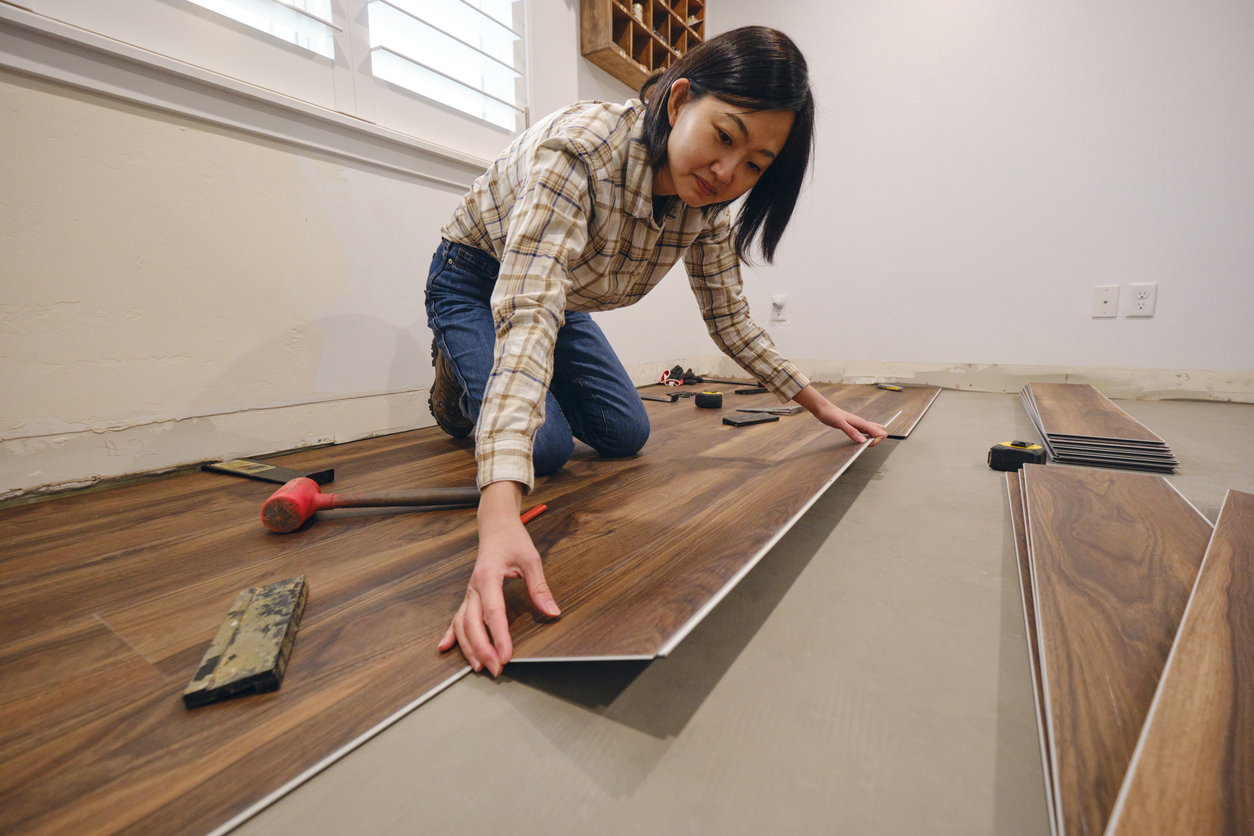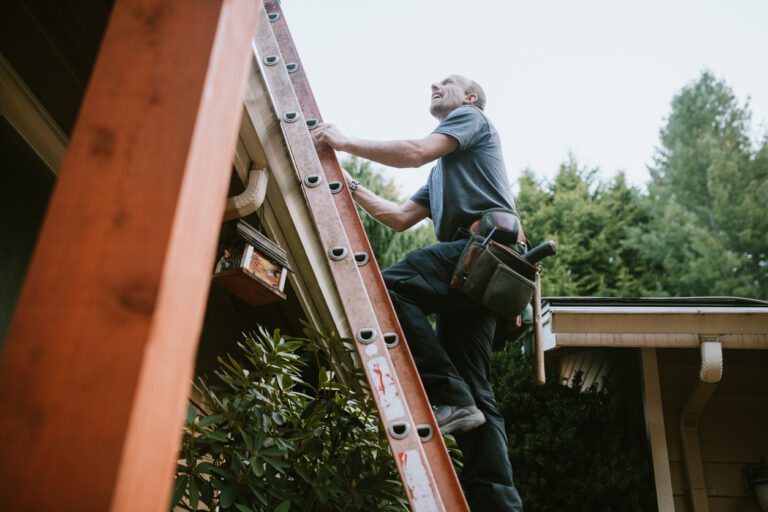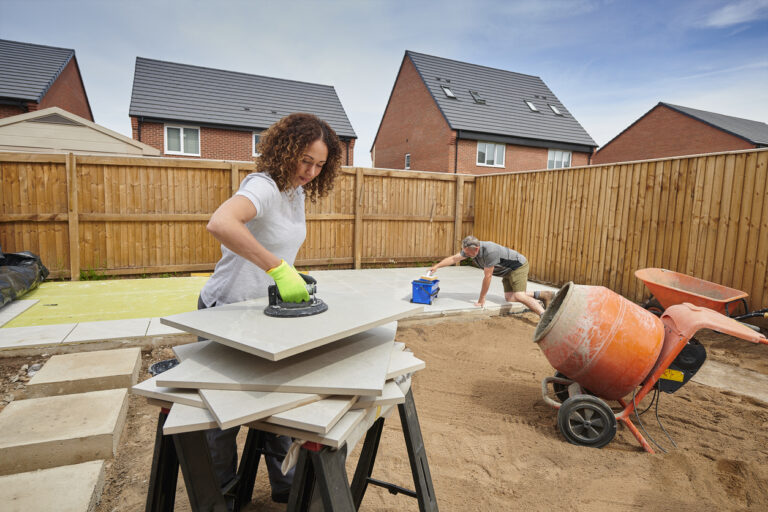Key takeaways:
- Identify and take care of needed repairs and maintenance items before listing to assure a smoother, more successful selling process.
- Be sure to understand the difference between making a house more marketable and earning a return on your home improvement investment.
If you’re thinking of selling your home, you may need to make some repairs and updates before listing it. Here, we’ll take a look at some essential repair and maintenance items, and some improvements you may – and may not – want to consider.
Repairs and maintenance
Taking care of needed repairs is essential to selling a home. Pay attention to repairs that could prevent your property from passing an inspection. Some of the most likely problems occur in these areas:
- Electrical – Issues such as old, outdated systems, and faulty wiring, may not pass inspection.
- Plumbing – Water damage anywhere in the home can be a sign of a plumbing issue, as can clogged, corroded or leaking pipes.
- Roofing – Take care of damage, missing shingles and any issues with water damage.
- Foundation and structure – Homebuyers will generally avoid purchasing a house that has problems with the foundation or structure. Fixing cracks and the effects of settling can be very expensive. Structural damage can include sagging floor joists, door headers and rafters, and poor drainage.
- Pests – If you have issues with any pests, you will need to address them before listing your home.
- Windows and doors – Buyers want to see well-sealed windows and doors that open and close properly. Take care of any broken panes.
With older homes, the presence of asbestos or lead paint can be a real issue. Older chimneys may sometimes need to be removed.
Don’t neglect any smaller repairs either inside or outside your home. Taking care of ripped screens, broken tiles and areas in need of touch-up painting can make a real difference. Confirm that all appliances are in working order. Fix any running toilets and leaking faucets. Repair cracked patios, decks and walkways. Staining a wood deck can also be a smart idea.
Improvements
Making some strategic smaller improvements can go a long way in helping sell a home. Painting interior walls and the front door can be inexpensive ways to freshen up a house. Just make sure to select neutral colors. Improving curb appeal of the house can make for great first impressions. Be sure the lawn is in good shape, weeds are pulled and bushes are pruned. Clear front and back yards of debris, toys and lawn-care equipment.
If you are considering making more major improvements to sell your home, take time to think through before diving in. Understand that the vast majority of home improvements provide less than a 100% return on investment. That means that you will not get back, through increased selling price, the money you spent on the improvement. Several publications provide averages and estimates of return on investment for various home improvement projects and can be a good resource in your research.
However, some improvements may improve the marketability of your home. For example, in some locations and neighborhoods, a home lacking an updated kitchen, or a certain number of bedrooms may be a challenge to sell – or could take longer to sell or fetch a lower price than comparable homes. Alternatively, it can sometimes be a wise move to adjust the sales price to allow for the current conditions, and let the buyer make their own decisions on improvements.
When evaluating marketability, another strategy is to make a minor or moderate upgrades. Kitchens and bathrooms may benefit most from these projects. Painting cabinets, adding new hardware, installing good lighting, and replacing flooring can make the home more attractive and improve your ability to sell quickly.
How to fund repairs and improvements
Ideally, you will have been saving on a regular basis to fund home repairs and maintenance. But if you think you will face some bigger expenses, you may need to look to outside sources.
A personal loan is one option. Tapping your home equity is another. A home equity loan – providing a lump sum of money up front – or a home equity line of credit, providing a line to draw on as you need it, are popular loan-based options. Both require qualification based on your credit, your home’s loan-to-value ratio and your debt-to-income ratio. And both use your home as collateral.
A home equity agreement (HEA) is another way to pay for home repairs and improvements, particularly for sellers with poor credit or limited income, and who worry about qualifying for traditional loans. With an HEA, a homeowner receives cash up front in exchange for a portion of the future value of their home. There are no additional monthly debt payments. Credit scores as low as the 500s may qualify, and there are no income requirements, making an HEA a good option for many self-employed and retired individuals.
See how much you prequalify for in less than a minute.
Get StartedConclusion
Thoroughly examine your home for needed repairs and maintenance items if you are thinking about selling. As you do so, you may even want to get your own pre-listing inspection with an independent home inspector. You also can get a good idea from a trusted contractor. The cost of an inspection will vary depending on your location and the size of your home, but usually runs a few hundred dollars.
Take the steps you need to present your home in the best possible light. Address repairs and maintenance and be very careful about taking on big improvement projects. Happy selling!



